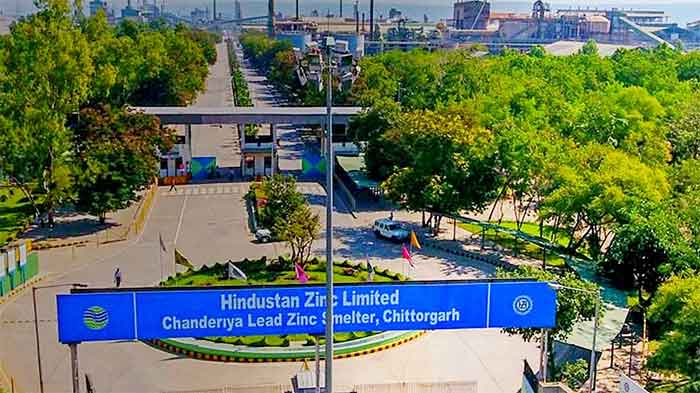
To
Smt Nirmala Sitharaman
Union Finance Minister
Dear Smt Sitharaman,
I write this in continuation of my earlier letter dated 24-1-2022 (https://countercurrents.org/2022/01/cpse-disinvestment-valuation-approach-flawed/) expressing my concern at the flawed valuation methodology adopted by the Department of Investment and Asset Management (DIPAM) for valuing the CPSEs for disinvestment.
It appears that your Ministry has not cared to revisit the methodology, as evident from the fact that the Cabinet Committee on Economic Affairs (CCEA) has since gone ahead and approved disinvestment of 93.71% of the equity of the joint sector CPSE, Neelachal Ispat Nigam Ltd (NINL) for Rs 12,100 Crores, a value that fails to reflect adequately the potential value of the assets that are being divested (https://www.livemint.com/companies/news/govt-approves-sale-of-neelachal-ispat-nigam-to-tata-steel-long-products-11643620778569.html).
In one of my earlier letters addressed to you on 20-11-2021 on disinvestment of Central Electronics Ltd. (CEL) (https://countercurrents.org/2021/11/the-sale-of-cel-is-not-justifiable/), I had specifically cautioned the government that the way it had gone about finalising the sale of the CEL would result in underselling it for a ridiculously low price of Rs 210 Crores, that too to a company that had nothing to do with the kind of innovative work in which the CEL was involved. My concerns stood fully corroborated as the sale of the CEL had turned out to be a highly improper transaction, forcing the government to put it on hold. It calls for an independent investigation which will surely bring out many more unsavoury details. That deal has cast a shadow on the government’s disinvestment policy, especially the valuation methodology adopted.
There are several other serious flaws in the government’s thoughtless policy of CPSE disinvestment (notified vide DPE/391/2021-DD dated 13-12-2021), which I have highlighted to you time and again.
The justification for CPSE disinvestment, as indicated by the government, is that it would fetch “additional fiscal resources”. It is an illusory and a misleading argument, as either the government or the private companies who buy the CPSE assets would ultimately have to access the same pool of savings in the economy. The only difference is that, if the government directly accesses the market for the additional resources needed, it would get the corresponding quantum of resources on much more advantageous terms, whereas, when it adopts the route of disinvestment, it not only undersells the CPSE assets but also loses its ownership and control of the CPSE to the detriment of the public interest.
Even the premise that the government is in need of additional fiscal resources for funding its social sector schemes is in itsel misleading, as there are other more appropriate and advantageous ways to reduce the fiscal gap, as for example, compressing public expenditure by pruning unproductive expenses (there are many such items) and raising additional resources by levying redistributive taxes to transfer resources from the more affluent segments of the society to its disadvantaged segments. Recent research literature on income distribution in the country clearly shows that the present paradigm of development and the government’s policies have sharply widened the income inequities, a trend that runs counter to Article 38(2) of the Constitution [“The State shall, in particular, strive to minimise the inequalities in income, and endeavour to eliminate inequalities in status, facilities and opportunities, not only amongst individuals but also amongst groups of people residing in different areas or engaged in different vocations]. To fulfill that mandate, the government should necessarily resort to redistributive taxation, which eventually raises the required fiscal resources, which in turn will make it a win-win option.
Coming to NINL’s mineral resources, the CPSE has a captive iron ore mine of 91MMT capacity (Ref. DIPAM’s Expression of Interest document). Even if it were to be valued purely in financial terms, considering that the world market price of iron ore (~60% Fe) is around $140/tonne, since NINL’s mine has a comparable Fe (Iron) content, the captive mine may have to be valued at Rs 95,550 Crores, at today’s exchange rate. This is far in excess of the price at which DIPAM has finalised divestment of 93.71% of NINL’s equity.
Additionally, Iron ore of that quality is a scarce depletable resource, as it is being extracted on a large scale. India’s Iron ore reserves (as per the United Nations Framework Classification) stand at 8090 million tonnes (Indian Iron & Steel Vision 2020 published by the Indian Bureau of Mines), whereas the annual rate of extraction of the ore in the country at present is 290 million tonnes, out of which around 50 million tonnes of the ore is being exported. If the ore were to be extracted at this rate in the coming years, it would last not more than 28 years. On the other hand, if the annual extraction rate were to increase, the available iron ore reserves would get exhausted within a much shorter time frame! This not only calls for a significant scarcity premium to be considered for valuing the iron ore but it also calls for a prudent norm of capping its annual extraction rate.
As referred earlier, these mineral resources belong to the people, attracting the mandate set out in Article 39(b) of the Constitution [“that the ownership and control of the material resources of the community are so distributed as best to subserve the common good;”]
The Hon’ble Supreme Court has time and again emphasised the obligation of the government to utilise such scarce natural resources with utmost prudence and care. To cite one example, the following observation was made in the Hon’ble Supreme Court’s Order dated 3-7-2019 (CAs 10720/2018- All Dimasa Students Union vs State of Meghalaya etc.).
“Natural resources of the country are not meant to be consumed only by the present generation of men or women of the region where natural resources are deposited. These treasures of nature are for all generations to come and for intelligent use of the entire country. The present generation owes a duty to preserve and conserve the natural resources of the nation so that it may be used in the best interest of coming generations as well and for the country as a whole“
The government as the custodian of the mineral resources of the country has the statutory obligation to comply with the spirit of Article 39(b) and respect the observations of the Hon’ble Supreme Court, keeping in view the future generations’ stake in the natural resources. Such resources cannot be treated as tradable commodities that can be sold across the counter without laying down an optimal extraction policy for their use. In my view, all CPSEs that have such depletable mineral resources need to be treated as “strategic” ones from this point of view, a perspective that is totally absent in the sweeping and mindless disinvestment policy announced by the government vide DPE/391)/2021-DD dated 13-12-2021.
If the NINL were to be realistically valued on the basis of the replacement value of its mineral resources, the market value of its leasehold/ freehold land assets, its machinery & equipment and more important, the enormous value of its highly competent, experienced personnel, the CPSE’s value would far exceed the paltry amount at which the government is now selling it away. In fact, as I have pointed out in my earlier letters, it is the social value of the CPSEs, not their financial value, that has relevance in considering the costs that their disinvestment would impose on the society.
In view of these considerations, I call upon the government not to go ahead with the sale of the NINL. In my view, the government should review its disinvestment policy from this perspective. Pending such a review, I suggest that the government puts on hold the whole gamut of CPSE disinvestment exercise with immediate effect.
In this connection, there are far better and more benign ways to improve the working of NINL. It could be handed over to Rashtriya Ispat Nigam Ltd (RINL) so that RINL may also benefit by NINL’s captive mine blocks, which will vastly cut down RINL’s raw material costs and improve its profitability. At the same time, RINL, with its vast experience and capability, can revive NINL’s operations to their mutual advantage. In fact, by doing this, the government may simultaneously do away with the proposal to divest its equity in the RINL itself, against which the people of north Andhra Pradesh have been agitating for valid reasons and on which I have also addressed the Prime Minister and you several times. In my view, the government will commit a grave mistake by privatising RINL and NINL.
I earnestly hope that the government will not choose to commit the same impropriety as committed in the case of disinvestment of the CEL.
Regards,
Yours sincerely,
E A S Sarma
Former Secretary to Government of India
Visakhapatnam















































